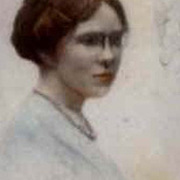Dorothy M. Richardson (1873–1957)
Autor de Pilgrimage I: Pointed Roofs / Backwater / Honeycomb
Sobre El Autor
Series
Obras de Dorothy M. Richardson
Pilgrimage IV: Oberland; Dawn's Left Hand; Clear Horizon; Dimple Hill; March Moonlight (1967) 94 copias
The Book Of Blanche 2 copias
Pilgrimage 1 copia
Obras relacionadas
Contact collection of contemporary writers — Contribuidor — 1 copia
Etiquetado
Conocimiento común
- Nombre legal
- Odle, Dorothy Miller Richardson
- Fecha de nacimiento
- 1873-05-17
- Fecha de fallecimiento
- 1957-06-17
- Género
- female
- Nacionalidad
- England
UK - País (para mapa)
- UK
- Lugar de nacimiento
- Abingdon, Oxfordshire, England, UK
- Lugar de fallecimiento
- Beckenham, Kent, England, UK
- Lugares de residencia
- Hanover, England, UK
Putney, London, England, UK
Worthing, West Sussex, England, UK
London, England, UK
Beckenham, Kent, England, UK - Educación
- finishing school
- Ocupaciones
- novelist
feminist
essayist
short story writer
journalist
governess (mostrar todos 7)
dental office worker - Relaciones
- Wells, H. G. (lover)
Odle, Alan Elsden (husband)
Odle, Edwin Vincent (brother-in-law) - Biografía breve
- Dorothy Miller Richardson spent her childhood and youth in secluded surroundings in late Victorian England. Her family was genteel but impoverished. Her schooling ended at age 17 when she had to start earning a living. She became a governess and teacher. After her mother's death in 1895, Dorothy moved to London and went to work as a secretary/assistant to a Harley Street dentist. She began moving in avant-garde artistic and political circles, including the Bloomsbury Set. She wrote essays, poems, and short stories, which she first published in 1902, translations of other works from German and French, and worked as a freelance journalist. In 1917, she married artist Alan Elsden Odle, who was 15 years her junior and a distinctly Bohemian figure. Dorothy M. Richardson is best known for her ambitious, pioneering stream-of-consciousness novel Pilgrimage, published sequentially in separate volumes — she preferred to call them chapters — as Pointed Roofs (1915), Backwater (1916), Honeycomb (1917), The Tunnel (1919), Interim (1919), Deadlock (1921), Revolving Lights (1923), The Trap (1925), Oberland (1927), Dawn’s Left Hand (1931), Clear Horizon (1935). The last part, Dimple Hill, appeared in four volumes in 1938. Dorothy Richardson called for equal rights for women, and the female point-of-view was the subject matter of her books. She called her fiction works "feminine prose." She died in poverty in 1957.
Miembros
Debates
Pilgrimage Year-long read en 2019 Category Challenge (marzo 2020)
Group Read: Pilgrimage by Dorothy Richardson, vol 4 (Oberland; Dawn's Left Hand; Clear Horizon; Dimple Hill; March Moonl en Virago Modern Classics (enero 2017)
Group Read: Pilgrimage by Dorothy Richardson, vol 3 (Deadlock, Revolving Lights, The Trap) en Virago Modern Classics (agosto 2016)
Group Read: Pilgrimage by Dorothy Richardson, vol 2 (The Tunnel, Interim) en Virago Modern Classics (abril 2016)
Group Read: Pilgrimage by Dorothy Richardson, vol 1 (Pointed Roofs, Backwater, Honeycomb) en Virago Modern Classics (Febrero 2016)
Reseñas
Listas
Premios
También Puede Gustarte
Autores relacionados
Estadísticas
- Obras
- 25
- También por
- 4
- Miembros
- 856
- Popularidad
- #29,896
- Valoración
- 3.7
- Reseñas
- 30
- ISBNs
- 76
- Idiomas
- 3
- Favorito
- 5


















Yes, I was bored by Pointed Roofs.
To read the rest of my review please visit https://anzlitlovers.com/2022/01/26/pointed-roofs-pilgrimage-1-by-dorothy-richar...… (más)